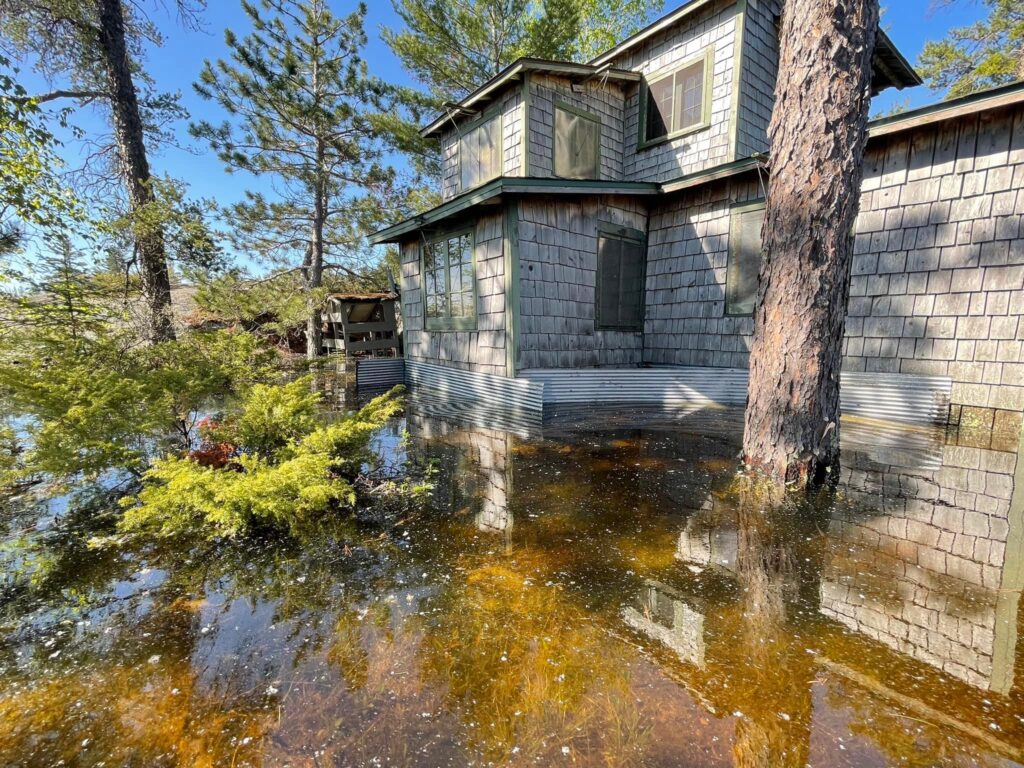
Fears of flooding in Rainy Lake and the surrounding watershed have come true in recent weeks, and now numerous public lands, private properties, and notable sites are affected. Water levels are higher than they have been in 72 years, surpassed the previous record set in 1950, and it’s still rising.
A rainy spring combined with melting of a deep snowpack across the region is blamed for the massive amounts of water finds its way downstream. Over Memorial Day weekend, as the rivers were already rising, one to three inches of rain fell across the area, compounding the problem. Huge bodies of water have risen several feet, representing an inconceivable volume of water.
Governor Tim Walz, Senator Tina Smith, and other officials visited the area on Saturday, June 4. Walz said with the flood’s peak still weeks ahead, it may be December before the water fully recedes. He said “there are a lot of ‘what ifs,'” but the state and federal governments are in it for the long haul. The National Guard has responded to help with sandbagging and other efforts.
Voyageurs National Park impacts


Voyageurs National Park has been forced to close many facilities, including boat launches and campsites, as park staff join the fight to hold the floods at bay.
On June 1, the National Park Service announced its Rainy Lake boat launch was closed until flooding recedes, although it remains open for those engaged in flood-fighting efforts. The Park Service has also closed all campsites on Rainy Lake. All trails and backcountry campsites on the Kabetogama Peninsula are also closed. More information about campsite closures is available on the Park’s website.
Boaters who still venture onto the park’s waters should be aware that no boat wakes are allowed within 300 feet of any shoreline. Boat tours have been canceled until at least June 20. The hotel, restaurant, and portage at Kettle Falls is also closed, while fuel and Villas lodging remain in operation currently.
Oberholtzer islands imperiled
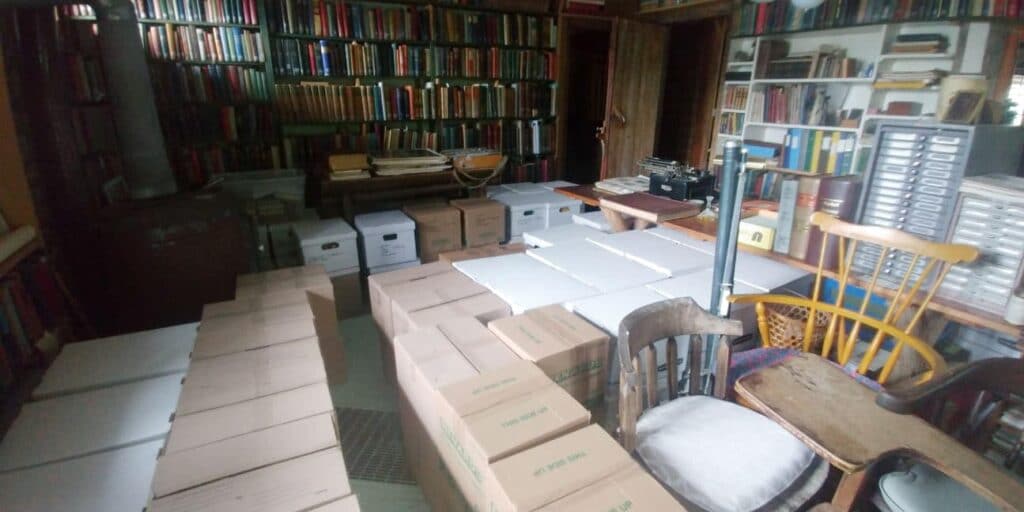
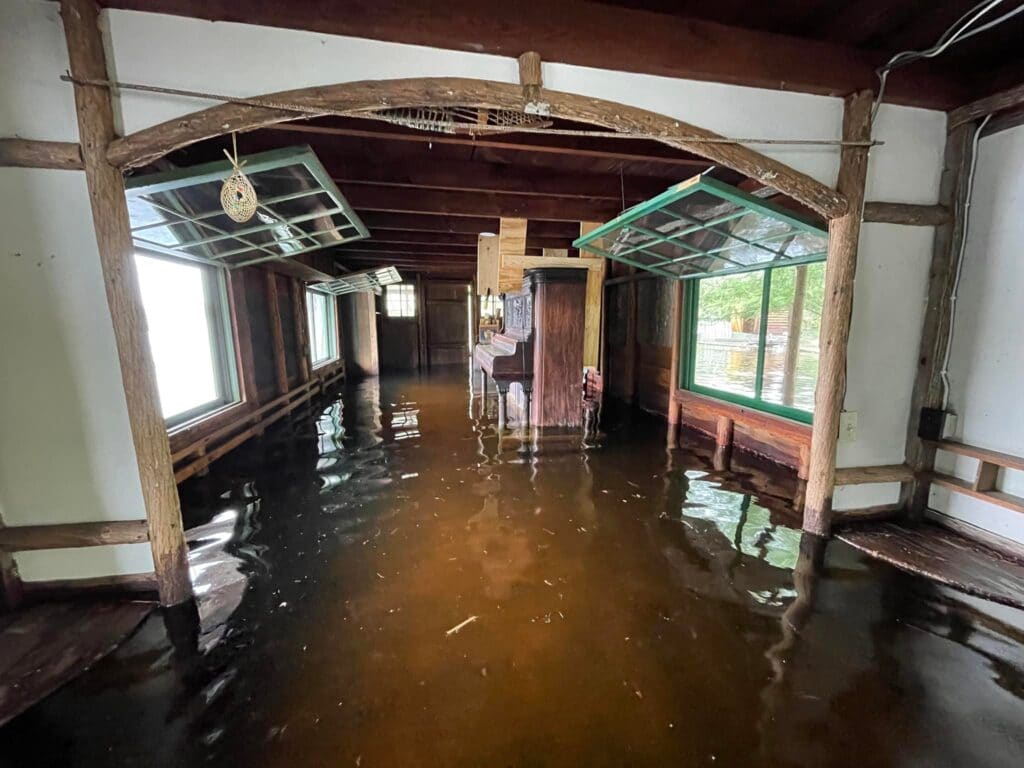

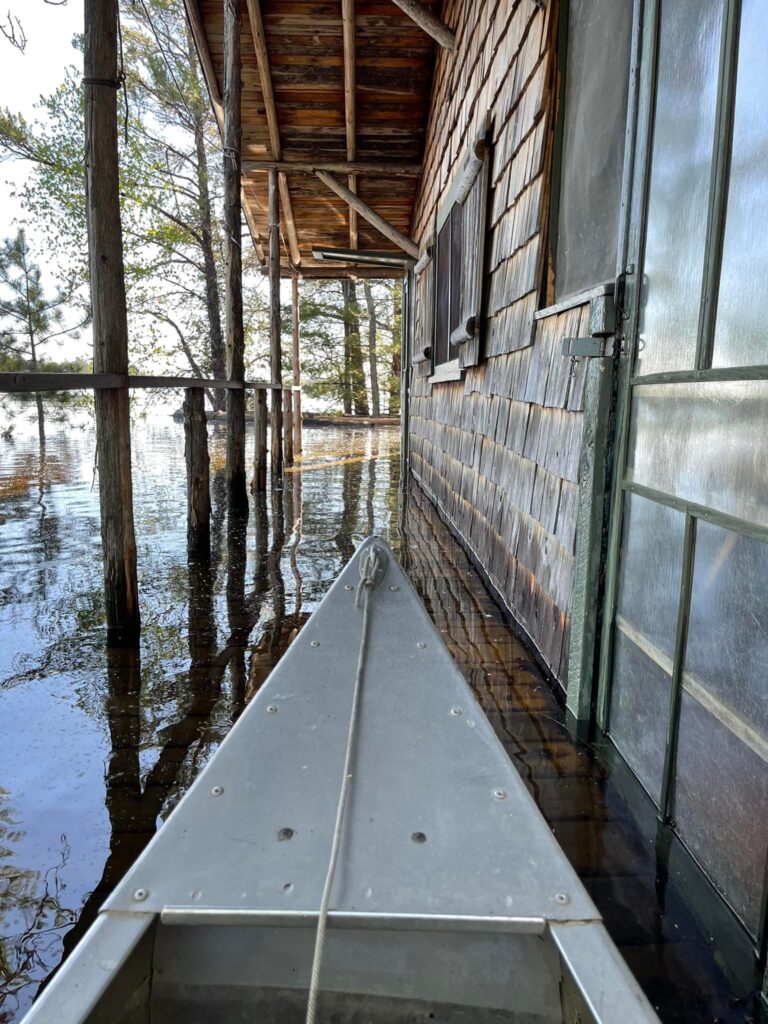
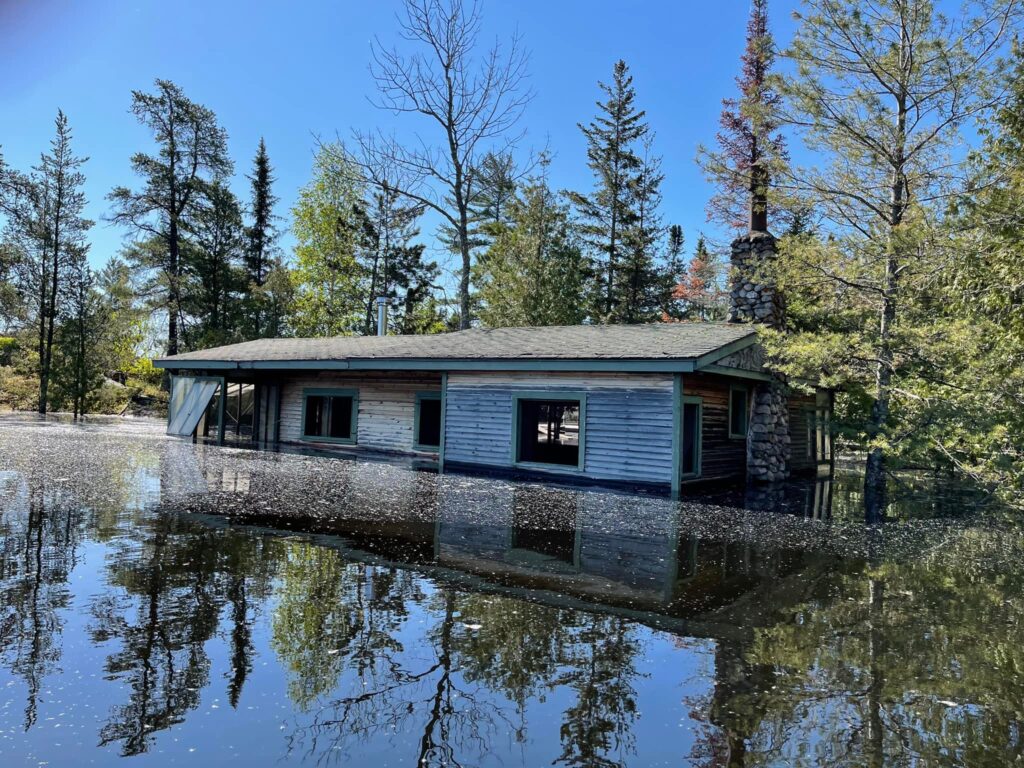
Historic Mallard Island on Rainy Lake, the small archipelago once owned by conservationist and explorer Ernest Oberholtzer and today owned and managed by the Oberholtzer Foundation, has also been affected extensively.
“This flood is unprecedented,” Oberholtzer Foundation said. “These historic buildings are being tested to the max.” The foundation has been moving quickly to protect the buildings and their contents. Volunteers and staff have moved books and furniture to upper floors and higher ground, and are closely monitoring the situation. “We will get through this with the help and support of many. Thankful for all of the people who have reached out and want to be there for the Mallard when she will need us most.”
Boundary Waters calls for caution
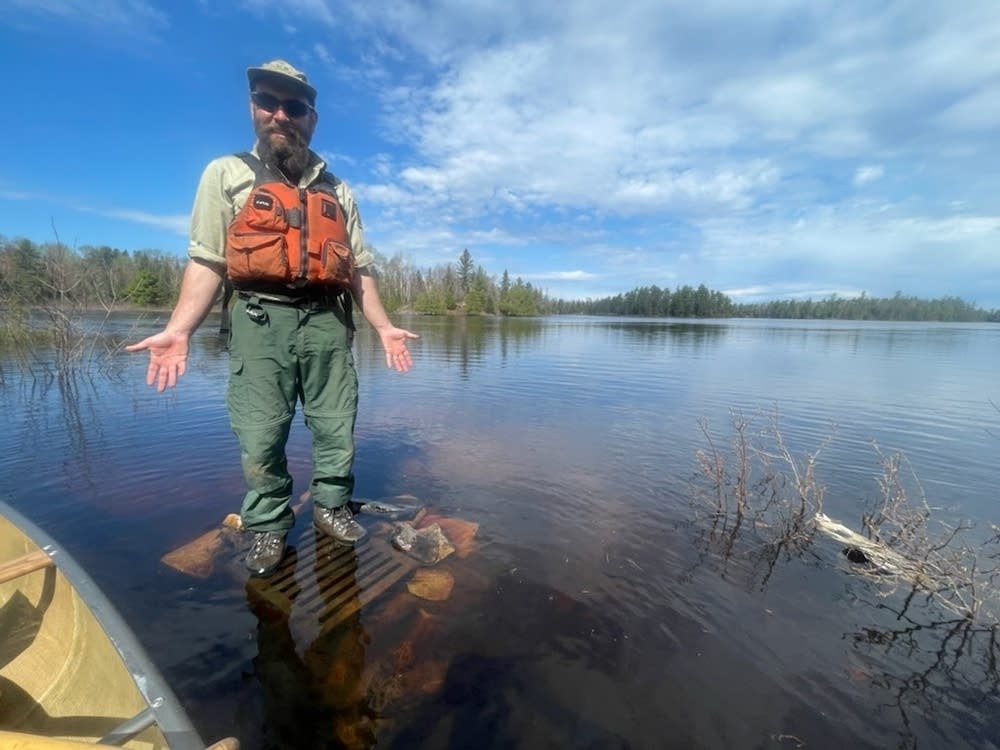
The high water has also hit the Superior National Forest and Boundary Waters Canoe Area Wilderness. The Forest Service reports some portages and campsites are flooded, rivers are running high and dangerous, and roads are washed out.
“Visitors may encounter unforeseen risks in the Wilderness, especially if we receive additional rainfall,” the Forest Service says. “The Wilderness is a place for adventure and risk, and this year there is high risk in some areas due to flooding. Portages and rivers are unpredictable, water is moving quickly, and there may be rapids.”
The agency urged people planning to visit the Boundary Waters to contact their permit issue station, at an outfitter, guide, or Forest Service ranger station, for updates on water conditions and how to be prepared.
Still rising
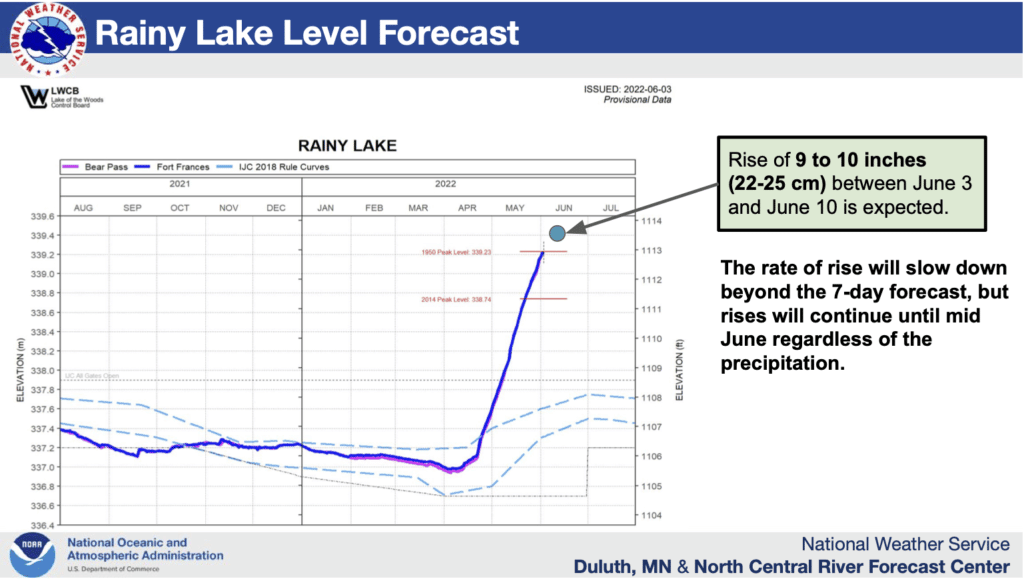
While lakes high in the watershed are now beginning to drop, a lot of water still needs to make its way downstream. As of Friday, June 3, the National Weather Service said Rainy Lake was 19 inches higher than a significant flood in 2014, and almost to the highest level ever recorded, in 1950. It has now passed that level.
The federal meteorologists said they think the water will rise another nine to 10 inches by June 10. Residents, volunteers, government crews, and others are working furiously to erect dikes and berms. Over the weekend, a clay berm was built around the International Falls Water Treatment Plant to protect it.
“Areas currently experiencing flooding and having to perform mitigation measures will likely continue to deal with these issues for the foreseeable future,” the National Weather Service says. “Rainy Lake will likely not peak until mid to late June.”
The agency offered a sliver of good news, saying the next couple weeks should be relatively dry, with precipitation limited to .25 to .50 inches by June 14. Almost none is expected before June 10.
Donations and information
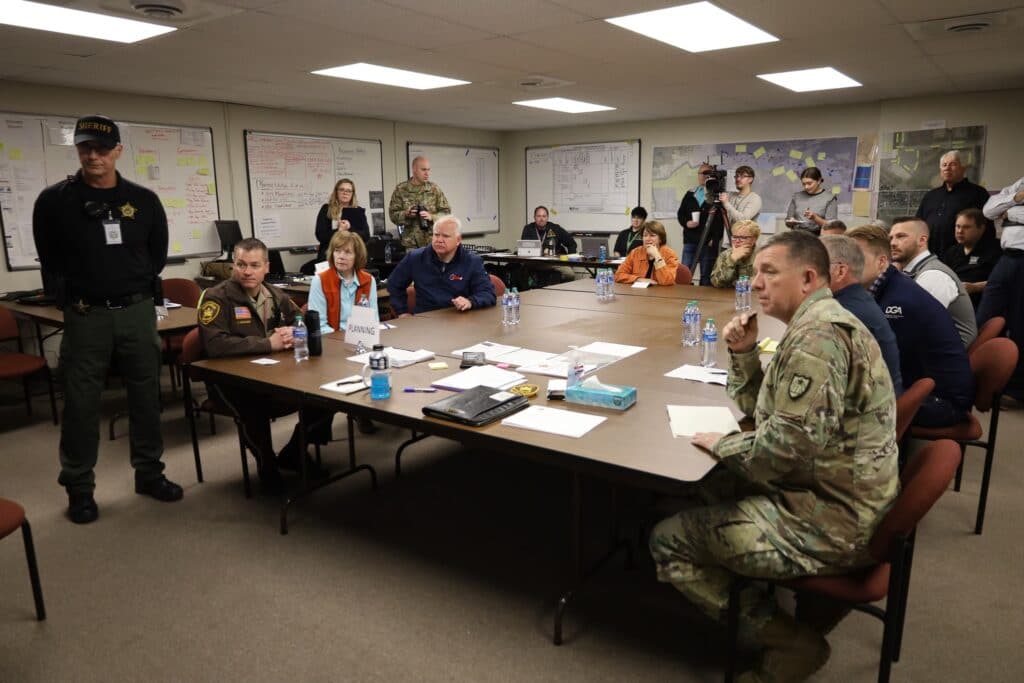
Koochiching County is asking for volunteer assistance filling sandbags at the main operations site at Kerry Park in International Falls.
““The demand for sandbags to help out citizens is the priority at this time,” said Sheriff Perryn Hedlund. “Many of our volunteers have been at this round-the-clock for days and even weeks. They can only do so much and need a break. Person-power to rotate these spots and keep the momentum going is what is critically needed.”
Mallard Island, Voyageurs National Park, private residences, and other sites may need volunteers and other assistance with clean-up once the waters do recede.
Koochiching County also requested financial donations to two nonprofit organizations that are assisting with flood response:
- American Red Cross of Northern Minnesota
Online at: www.redcross.org/donate
By phone at: 1-800-HELP NOW (1-800-435-7669) - International Falls Salvation Army
Online at: www.centralusa.salvationarmy.org/northern/InternationalFalls/
By phone at: 218-283-3394
Weather and water level information and forecasts is available from the National Weather Service.
More information:
Massive Rainy Lake watershed shows vulnerability to flooding — and possibly mining, Star Tribune

